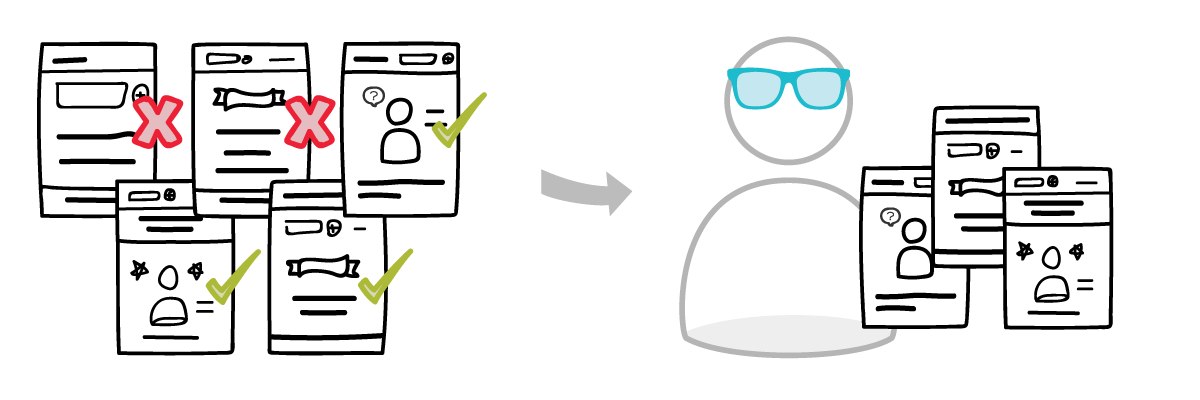
In our last post, we explained how a UX portfolio can help you get a job interview. Your portfolio can also support your next career move. You can use your portfolio to get the job that’s right for you, and not just any job that’s available.
What work do you include in your portfolio to get the job you want? How do you know what not to include?
You don’t need to include every project you’ve worked on over the past few years. Ian Fenn recommends showing work that you want to do more of in your portfolio. In his seminar, Sharing Our Stories: Designing and Reviewing UX Portfolios, Ian says this is a great way to land a UX job that you’re good at—and happy with.
For example, if you want to do more user research at your next job, look for UX jobs that involve a lot of user research and create a portfolio that showcases your user research work. Deemphasize other work you’re less interested in doing. In this case, play down things like prototyping, information architecture, and content strategy.
You can still include a variety of work to show that you’re a well-rounded UX designer. Just make sure to highlight the work you want to do. Remember, your portfolio tells stories about you, as a designer. It tells stories about your past work and where your focus is for future work. A great portfolio helps you get opportunities that align with your skills and interests.
In the next post, we’ll explain how to keep an updated list of work accomplishments for your UX portfolio.
Learn more about creating a UX portfolio
To learn more about UX portfolios, you can pre-order Ian Fenn’s book, Designing a UX Portfolio. You can also purchase Ian’s video seminar, Sharing Our Stories: Designing and Reviewing UX Portfolios, from the All You Can Learn video library.
Become a Center Centre student
Are you transitioning your career to UX design? Would you like to graduate from Center Centre as an industry-ready, junior UX designer with a portfolio of your work? View our full program or apply today.

